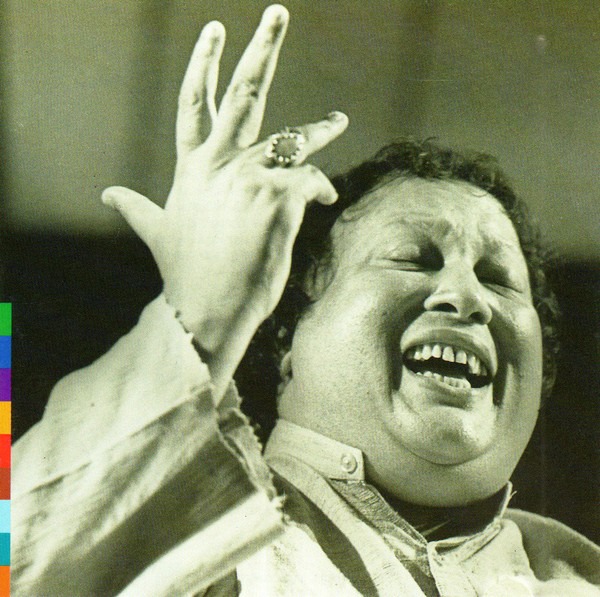
I started doing one of those “post an album cover a day” things over on Facebook, and because I’m bad at following directions I’ve been doing a couple a day and also writing about what the albums meant to me. In the process I’ve found a lot of cases where I could have sworn I wrote something previously about albums that meant a lot to me, but … crickets. So I’m treating those cases as writing prompts and you get to read them. Ha-ha!
So, Nusrat. I because aware of the great legend of Qawwali the way most Westerners probably did initially, through Peter Gabriel. Just as “In Your Eyes” boosted the Western stardom of the remarkable Youssou N’Dour (previously), Nusrat appeared on Gabriel’s Passion, the (slightly-more-than-a) soundtrack to The Last Temptation of Christ. I consumed the album the summer between my junior and senior years in high school—actually bought it in a record store in Blacksburg while I was at the Virginia Governor’s School for Science at Virginia Tech. I don’t know that I fully appreciated what Nusrat was doing on “Passion,” but I at least knew who he was.
The packaging of the album, which was the first release on Gabriel’s Real World label, also hooked me. The front covers—all bold images, with titles and artists only present via stickers—combined with the rainbow stripe along the side. The rainbow was actually an indexing system, with each stripe standing for a continent or region and an icon in each showing what regions the recording was from. So I kept an eye out for Real World recordings and started frequenting the world music sections of the record stores I visited.
Fast forward a few years. I had become friends with Tyler Magill through the Virginia Glee Club, and he was a more voracious listener and musical cosmonaut than I had ever dreamed possible. So when he and his housemate Burt started raving about the insane things that Nusrat Fateh Ali Khan was doing on his albums, I finally bit the bullet and purchased my first of his recordings, Shahen-Shah.
Calling me unprepared is probably an understatement. The harmonic language of the music was familiar enough on first listen; most of the works seemed to be variations on a few simple chords, with harmonium and choir underpinning the melodic improvisations. But what improvisations! Nusrat or his disciple Ali would essay the melody, and then flip effortlessly into a vocal run across one or more octaves. The rhythmic complexity beneath the apparently simple surface was mesmerizing. I must have listened to “Kali Kali Zulfon Ke Phande Nah Dalo” a dozen times. (It later made an appearance on one of my best early-90s mixes.)
The reverberations Shahen-Shah made through my life were pretty deep. I sought out all the Nusrat I could and dug deeper for more world music. I used some of Nusrat’s tactics, particularly flipping to a different modal scale in the middle of an improvised run, in my own singing, particularly when we performed Babatunde Olatunji’s “Betelehemu” in my fourth year. And one memorable autumn night I attended a performance by Nusrat Fateh Ali Khan and Party in Washington, DC. (It was mesmerizing. I have at no other time in my life been the only white American in the room, but by the end we were all on our feet singing along with “Jewleh Lal” and “Mustt Mustt.”)
And my love for Nusrat deepened my love for Jeff Buckley when I heard the extended version of his great Live at Sin-É, when he declared, “Nusrat? He’s my Elvis,” and went on to deliver an absolutely perfect rendition of “Yeh Jo Halka Saroor Hae.”
So yeah, feels like a good day to pull out some Nusrat Fateh Ali Khan again.
